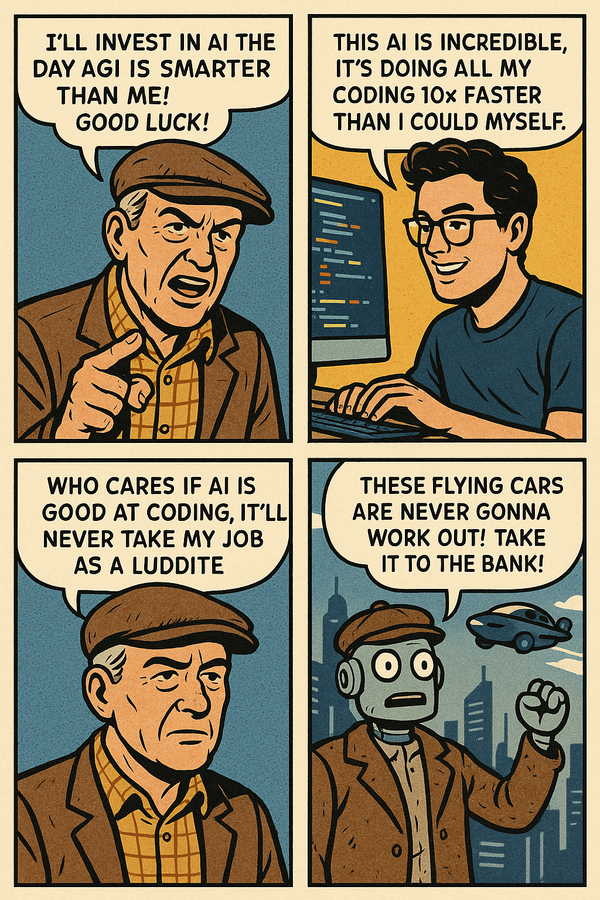You all know these two and perhaps a trade here is setting up…
Not all app stocks are created equal. And not all chip suppliers into the smartphone/tablet revolutions will benefit. Indeed, now’s the time to start separating the winners from the losers, so that when the rest of the Street finally sees the differences, it’ll likely be too late.
As you guys know, this summer, I’ve re-written and completely updated my original “50 Stocks for the App Revolution” eBook and you guys get it for free. I just wanted to flag the following to bits of analysis of two companies that look very similar to each in 2011 but that won’t look anything alike in 2021.
In the book, we break down the entire app eco-system into eight disparate sectors —
I. App platforms/software: (8 stocks)
II. App gadget vendors: (7 stocks)
III. App component suppliers: (12 stocks)
IV. App network infrastructure: (6 stocks)
V. App Infrastructure Component Suppliers: (3 stocks)
VI. App equipment contractors: (5 stocks)
VII. App network providers: (6 stocks)
VIII. App retailers: (3 stocks)
Here’s two of the third sector there, the app component suppliers. You all know these two and perhaps a trade here is setting up rather nicely with both time, price and outlook.
Company
INTC – Intel Corporation
Summary
Intel is the biggest seller of microprocessors in the world. Microprocessors are the “guts” inside all those computers and devices that will ultimately be running the Apps.
Balance Sheet
Cash and Cash Equivalents: 4.2 B
Short Term Investments: 7.8 B
Long term Investments: 2.8 B
Total Cash: 14.8 B
Total Debt: 2 B
Net Cash: 12.8 B
Outstanding Shares: 5.3 B
Net Cash / Share: 2.4
Share Price: 21.42
Enterprise Value / Share: 19.02
Total Market Cap: 114 B
Enterprise Value: 101.2 B
2012 Sales Growth: 5.7%
2012 Earnings Estimate: 2.39
Enterprise Value Multiple: 8 Times Forward Earnings
Dividend & Yield: .72 (3.3 %)
Intel’s laser focus on research and innovation has paid huge dividends. Apple’s move from its long standing reliance on IBM’s chips to Intel’s in 2005, augured its entry into the mainstream PC market. Last year Apple cracked 10% of domestic PC sales; there’s no doubt that the shift to the widely-accepted Intel standard had much to do with its transformation from niche-player to third-largest PC manufacturer.
With the breakthrough of mobile devices, Intel is well positioned to dominate a new market once again. After buying the wireless unit of Infineon and ramping up work on its Medfield mobile chipset, Intel reports seeing huge interest from manufacturers of Android-based tablet devices.
The Street and Intel have a rocky relationship, one that revolved around the quarterly numbers game and granular financial results. True, its $7.7B acquisition of McAfee left many analysts scratching their heads, but Intel is making a bet that it can integrate security products as a value-add with its mobile products, a market that is going to be doubling in the next few years. At less than 9x forward earnings, you can get long Intel cheaply and with a yield that bests Treasuries. With a 3.3% yield cushion for investors and its $13B cash cushion, Intel is one of the cheapest, most compelling long-term plays on the huge secular growth store of mobile, and by proxy, Apps.
–
Company
AMD – Advanced Micro Devices, Inc.
Summary
Advanced Micro Devices, Inc. provides semiconductors for servers, personal computers, notebooks and all kinds of electronic devices.
Balance Sheet
Cash and Cash Equivalents: 602M
Short Term Investments: 1.1 B
Long term Investments: 486M
Total Cash: 2.2 B
Total Debt: 2.2 B
Net Cash: 0
Outstanding Shares: 681 M
Net Cash / Share: 0
Share Price: 7.19
Enterprise Value / Share: 7.19
Total Market Cap: 4.9 B
Enterprise Value: 4.9 B
2012 Sales Growth: 5.7%
2012 Earnings Estimate: .76
Enterprise Value Multiple: 9 Times Forward Earnings
Dividend & Yield: N/A
After having Intel on the run in the early 2000s, AMD is looking a lot more like a company running away than one being pursued. Over the past year with the S&P up 16%, AMD has lost 7% of its value; the picture looks really dire when you consider than with the S&P flat over the last 5 years, AMD is worth around 70% less. Ouch.
A turnaround anytime soon doesn’t seem to be in the cards. While nearly every other one of its peers sits on huge amounts of cash, AMD is saddled with $2.2 billion in net debt. Its already starting with a deficit in tech R&D and its lack of money in the bank makes it practically impossible that it will give Intel trouble again anytime soon. Don’t go bargain hunting on this one.




